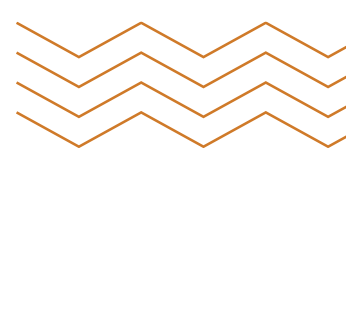


Contents
| Sohini Bhattacharya | THE LEDE |
| Muskaan | CLOSE UP |
| Prof. Poonam Batra | COVER STORY |
| Annie Namala | CHANGE MAKER |
Editor’s
Note
Sohini Bhattacharya
“To teach in a manner that respects and cares for the souls of our students is essential if we are to provide the necessary conditions where learning can most deeply and intimately begin,” says bell hooks.
Education that disregards social and economic barriers and provides students an equal chance at achieving their full potential is equitable education. At a basic level, it means every student receives the resources needed to acquire basic skills in reading, writing, and simple arithmetic notwithstanding their social, economic, cultural, ethnic, or geographic differences. But to elevate itself to the true potential, it also means-and this is often disregarded – all students should have interactions at school that do not follow the usual gender-normative route. For example, seating boys and girls together in classes, granting them equal opportunity to participate, or including them as part of the same group during activities regardless of caste, gender, class or ability.
Fairness and inclusion are essential parts of an equitable education. This means that personal and social circumstances like caste, gender, socioeconomic status, location, ability and sexual identity should not stop you from accessing education and a basic level must be available to all. Structural inequality is often seen where students from a remote rural background do not have access to the same educational infrastructure as those from an urban metropolitan city. Rich students attend private schools with full amenities while poor children are relegated to government schools or lower-end private schools with insufficient and poorly maintained infrastructure.
We tend to disregard that inequity exists within each of those systems, which may appear equal to some. For example, the specific needs of students from various backgrounds could be different. However, education systems do not take into account different needs of students or varied backgrounds. The need for augmented resources for children with greater needs and the most disadvantaged backgrounds too is not factored in.
Bridge classes, scholarships for financially backward students, different teaching methods for students with disability, including mental and learning disabilities are some ways in which we can address inequities within schools which appear homogeneous at first glance.
Such efforts within schools must match the tenets of national education policies in order to ensure social inclusion measures for marginalised students and become a general process rather than an exception. The National Education Policy in India, 2020, stresses on equitable participation and learning across all genders and social categories by 2030 and gives us an opportunity. However, it is left to the states to choose the extent to which they desire to adopt the National Curriculum Framework (NCF). Further, there are no independent authorities to evaluate State curricula or their implementation of the national curriculum despite the Central Advisory Board for Education (CABE) being set up to conduct reviews and evaluations of national and state curricula. However, no defined frequency for this exercise has been laid down, diluting its authority. Similarly, other evaluations (such as the one by the Department of Gender Studies, NCERT in 2014) are also infrequent and neither the NCERT nor SCERTs are mandated to adopt recommendations arising from these evaluations.
Other countries can provide a roadmap. Finland is known around the world for promoting fairness through lifelong learning, a well-rounded educational system, and a Nordic welfare state that employs well-paid and esteemed educators. This equity is described as “minimising the influence of social class, gender, or ethnicity on educational outcomes” while ensuring that all students reach a minimum level of basic knowledge and skills. This, according to Pie Wen Chong, is done through “active social investment through universal early childhood education,” “a comprehensive education model” that sets nearly uniform standards for all schools, and “the provision of support to lower-performing or at-risk students” The sync between policy and the education system is key here.
A plug-in within even the most equitable systems must be made for gender equity as the success of education as a social justice system is deeply embedded in achieving gender equity. While access can also be a gender issue, this can be monitored easily by a
The cover story by Prof. Poonam Batra adopts a wide lens approach and gives us the big picture of equity in education and how far away we are from achieving it. The essay details how capability deprivation pans out in schools and the various ways in which inequity has worsened in schools, including through curricular models which tend to exclude. Prof. Batra also looks at the need for various stakeholders to collaborate in creating more inclusive education models. Prof. Batra is a prominent educationist and also advises the government on matters of education. Her research on teaching in the Global South, decolonising education and transforming public education is well-known and frequently cited.
In ‘Close Up’ we turn our lenses on Jeevan Shiksha Pahal, a school run by Muskan in Bhopal. The profile details how teachers and thoughtful pedagogical models can create a difference for children who are isolated from mainstream education and struggle to keep up. What does the future look like for them? What kind of educational models are likely to strike a chord and ease the process of learning? The school is for children of Denotified Tribes, especially Pardhi and Gond communities, and provides schooling up to Class VIII using the state board curriculum as well as their own pedagogies which are sensitive to these children who are cut off from mainstream education.
In ‘Changemaker’ a conversation with Annie Namala of the Centre for Social Equity and Inclusion (CSEI) serves as a reminder of the RTE (right to education) movement and the need to incorporate the views and needs of Dalit and Muslim voices in the framing of the right to education. Through the interview, we also get to know about alternative curriculums focusing on English, mathematics and life skills that have had a significant impact on the learning outcomes of Dalit, Muslim and tribal children. Annie Namala is a renowned activist who works on education and social justice. A crucial member of the RTE movement, Annie is also the Director of Centre for Social Equity and Inclusion,

Sohini Bhattacharya
Editor-in-Chief, Engendering Education
- Niemi, Hannele, and Ulpukka Isopahkala-Bouret. 2015. “Persistent Work for Equity and Lifelong Learning in the Finnish Educational System.” The New Educator 11 (2): 130-45 doi:10.1080/1547688X.2015.1026784,
- Chong, P.W. 2018 The Finnish “Recipe” Towards Inclusion: Concocting Educational Equity, Policy Rigour, and Proactive Support Structures. Scandinavian Joumal of Educational Research, 62(4), 501-518. https://doi.org/10.1080/00313831.2016.1258668.)
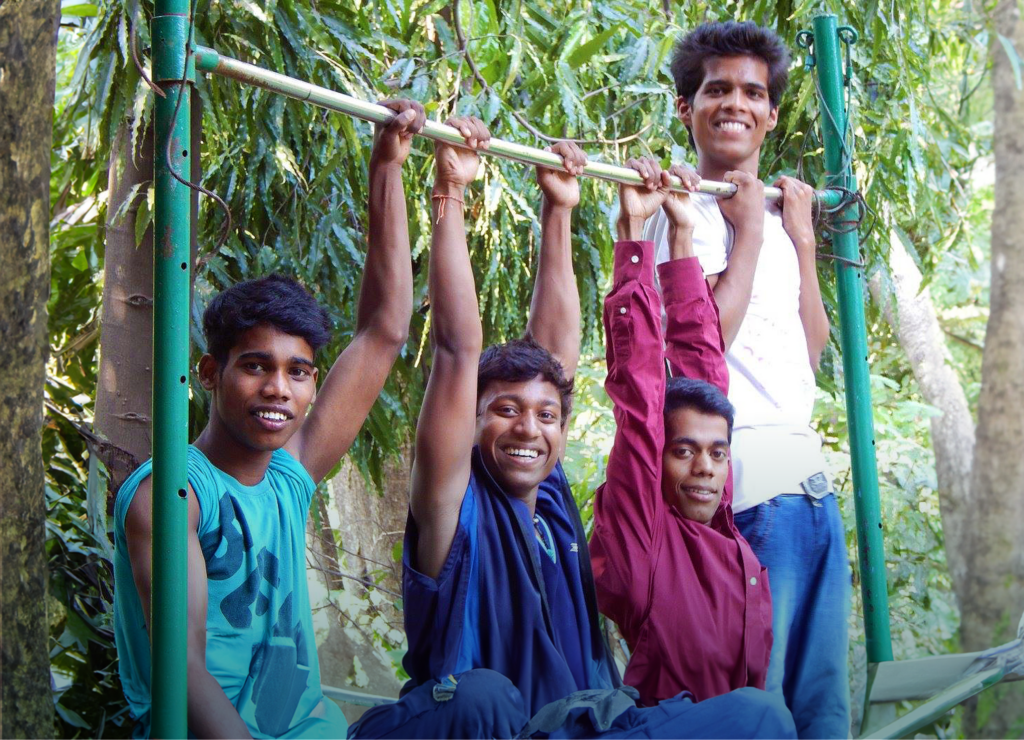
A School
in Bhopal
Stands Tall
Muskaan
Jeevan Shiksha Pahal is a school established by Muskaan, a non-government organisation, on the outskirts of Bhopal. The school which came up in the mid-2000s has made its mission to nurture the fragile dreams of children belonging to Pardhi, Gond, Kanjar and other communities that have long been marginalised by Indian state and society. Some of these communities are known as Denotified Tribes.
Tasveer Parmar, Chandni Jagat, Ragini Lalit and Shivani Taneja, all closely associated with the school Jeevan Shiksha Pahal – and Muskaan its parent organisation – talk to Engendering Education about how the school has been providing hope and support to scores of children who face grim realities from a tender age and an uncertain future.
When Tasveer Parmar became the first lawyer from the Pardhi community in Madhya Pradesh – it was a moment of jubilation – not just for Tasveer but also Jeevan Shiksha Pahal, the Bhopal-based school where he studied and its students.
The school is run by Muskaan, an organisation which works with Pardhi, Kanjar, and Gond tribal communities (part of Denotified Tribes) in Madhya Pradesh.
DNT communities, especially Pardhis are subject to violence and discrimination in everyday life and routinely criminalised by the police and institutions. The criminalisation of Pardhis is a legacy of British colonial rule who classified them and other tribes under the Criminal Tribes Act, 1871. Though the Act was revoked and the Pardhis were ‘de-notified’, they continue to live under the shadow of the erstwhile law and are deeply stigmatised. As a result, Pardhi children are marginalised in nearly every aspect of life.
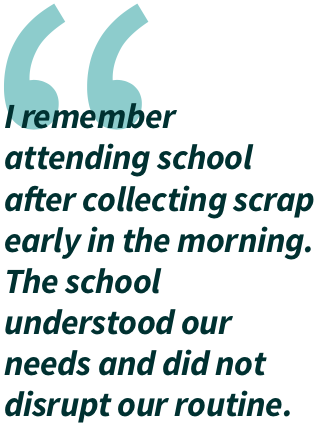
Tasveer Parmar
The first lawyer from the Pardhi community in Madhya Pradesh.
Tasveer, now 26, has memories of going out with his mother at 5 am to collect scrap as a child. He joined Jeevan Shiksha Pahäl, or Muskaan, as it is more popularly known, in 2003-04, The income he and his mother would get from scrap collecting- typically Rs 100-200-was indispensable for the family’s daily needs.
“I remember attending school after collecting scrap early in the morning. The school understood our needs and did not disrupt our routine” says Tasveer who also recollects having a tough time, initially, with Hindi. “The curriculum was Hindi-based. But our language is Pardhi. The school recognised this difference and eventually adapted an approach which attached more importance to our own languages.”
As a child and teenager, Tasveer worked in the construction industry and wedding and party catering. “The police harassed us incessantly. They always picked on us because of our Pardhi background. I was just in Class V when the police took me and my father away on the pretext of theft. This was completely untrue. Later, the charges were dropped but we were not compensated nor any amends made for the harassment.” Having borne police violence and witnessed courts from a tender age, Tasveer decided to become a lawyer. “Nobody wants to represent Pardhis or fight for our rights,” he explains.
Tasveer is currently preparing to write examinations for the bar and credits Muskaan with creating an environment to study and learn, and also encouraging its students to dream.
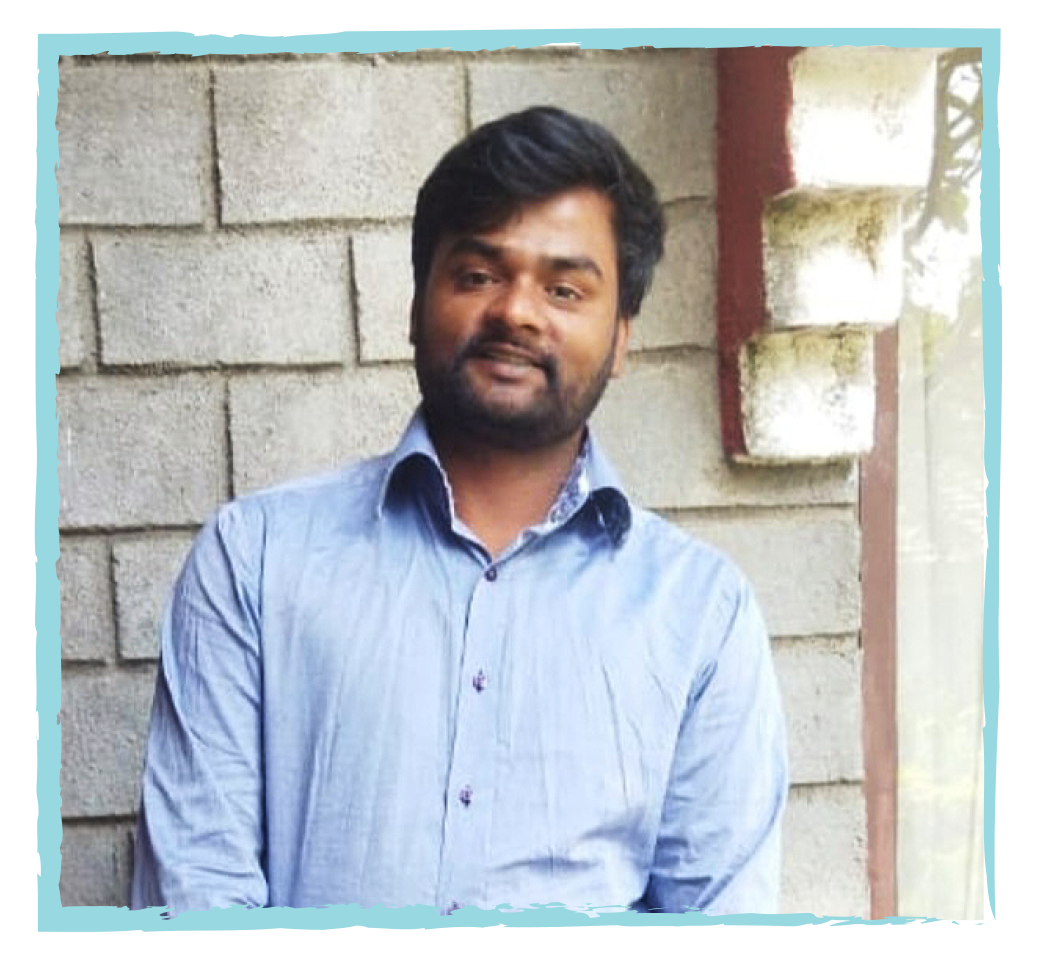
Chandni Jagat, 32, from the Gond community is among the first females in her community to become a lawyer. For Chandni too, the initial spark was provided by Muskaan. She finished her law degree in 2021.
“My earliest memories of Muskaan are from the time when I had not yet learned how to read and write,” she says.
The organisation and the school have played an integral role in Chandni’s life, supporting her through school education, graduation and then law. She credits Muskaan with giving her love and affection, belonging and hope. “Life is not easy. Muskaan showed us a way,” she says.
On wanting to study law, she says: “Growing up, I saw a lot of police violence and social discrimination, especially against Pardhi children who were our classmates. Police would regularly harass children of our slums and accuse them of being criminals.”
“We understood how people talk to us and think about us. People from our communities want to become lawyers in order to fight for our rights.”
Chandni wants to work on adivasi land rights and with adivasi children and is now learning the profession with a senior lawyer. Her family is extremely proud of their daughter’s achievements.
“My parents were not very educated. They thought that it could only be a good thing when I began studying the law. They feel pride that their daughter is a lawyer,” she says.
According to Ragini Lalit, who has worked with Muskaan and taught at the school, individuals like Chandni and Tasveer are a big inspiration. “This was a big moment for the school’s children. They saw one of their own becoming a lawyer and could envision that for themselves,” she says.
“Pardhi children face discrimination at school, may lack support at home and their future is riddled with uncertainties.”
It is at Jeevan Shiksha Pahal where children of oppressed communities congregate to not just receive formal education but also engage with their realities through story-telling, writing, art and craft, and other forms of expression.
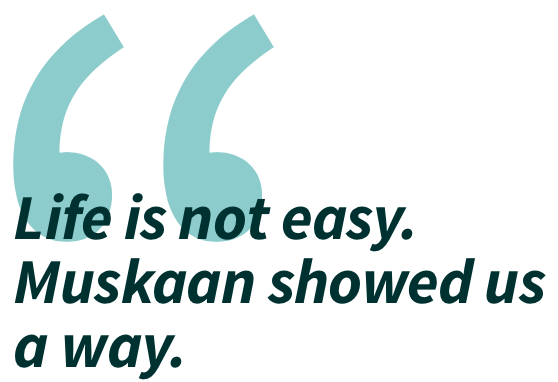
Chandni Jagat
One of the first female lawyers from the Gond community.

The school is registered up to Class VIII under the Madhya Pradesh state board, and also supports students up to Class XII through open schooling. The school currently has 170 children and 11 full-time teachers and other supporting educators who teach specific activities like pottery, frisbee, theatre, and music.
A creative curriculum
“We have to achieve certain objectives by Class 8 as per the state board in English, mathematics, social sciences as well as other subjects. But at the same time, the school has a lot of freedom to design its curriculum,” says Ragini.
“Can students engage with their texts and also be critical of it? For example, when they read the table of contents of a book, can they spot authors from the Dalit or adivasi community?”
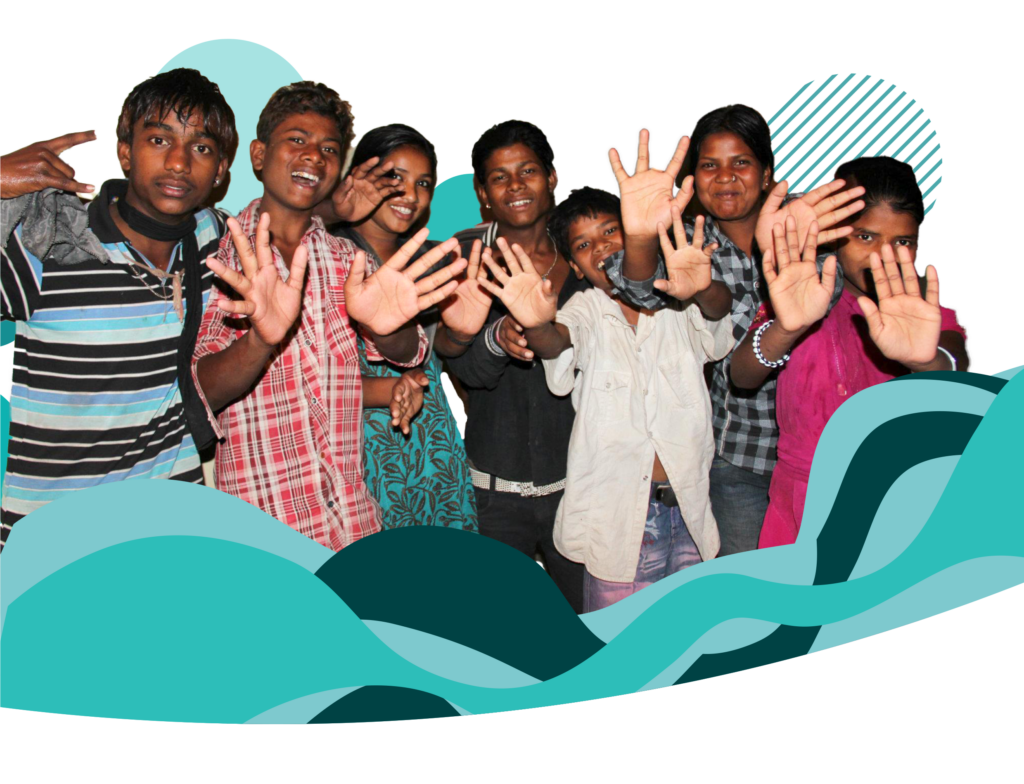
The school sets about bringing a “double consciousness” to achieve the standards set by the state but also enables students in developing an understanding of their identity and articulating their own needs, dreams and hopes. Learning at Jeevan Shiksha Pahal goes beyond curriculum and academics.
Students spend a lot of time doing other things, especially involving their hands and movement such as theatre, playing frisbee, working with the land, soap and diary making.
What constitutes a ‘normal’ childhood for most is far from normal for children of Pardhi tribes who begin working very early in scrap picking, seasonal work, and catering in ‘shaadi party’ (weddings and parties).
In Learning Curve, an Azim Premji University publication on primary school education, Muskaan founder Shivani Taneja writes that acknowledging marginalised children requires lowering the stature
traditionally granted to savarnas or upper castes and classes, to which a majority of teachers belong.¹
“I recall a class where we were discussing why schooling is important for children of marginalised communities and why they should not give it up. The children started the conversation from the viewpoint of a desire to achieve something big and then went into the need to regain the dignity of the marginalised communities and show the savarna what a child from a specific community was capable of,” she writes.
“This, then, veered into the idea that each one of us is unique and could try to steer our lives on different paths that work for each one of us individually and that more options would be open to us through education.”
Challenges
While parents in the Pardhi community nurse dreams of sending their children to school and work hard towards it, many obstacles present themselves.
Pardhis are a frequently dislocated and historically marginalised people whose way of life does not complement mainstream living. Therefore, sending a child to school every day is not the easiest thing to do.
Ragini explains: “There could be several issues at home. A family member could be in jail, or there is no food at home. There could be debts. But once education is seen as valuable and it starts working for the family and the child, it becomes something they are willing to compromise on their other day-do-day challenges.”
It also helps that Muskaan has a trusted presence within the community on issues like police related violence, children’s protection, aid and relief work. “The entire philosophy of our work is guided as an organisation which is centred in the community space,” says Shivani.
Muskaan also has a hostel for girls who want to complete school and ward off everyday pressure and conversations around marriage at home. Girls who pick scrap to supplement the family’s income are expected to continue scrap picking even after they marry. Therefore, the likelihood of girls dropping out is high. While boys do feel the pressure to be the family breadwinner, they can still expect to study, even if they are married off early.
Language has a prominent role in Muskaan’s teaching methods.
“We are aware that the children already have very rich language backgrounds. At the school, children use their experiences and lived realities to approach language instead of the usual method of applying language to make sense of the world,” says Ragini.
Learning at the school is therefore multilingual involving a mix of Gondi, Pardhi and Hindustani. Children write their exams in Hindi. Fair emphasis is also placed on English which is “the language of
power and aspirations” and required to apply for jobs and fill out forms.
Another area where Muskaan is making a difference is through their literature division which brings out publications representing the realities of marginalised children. “There are barely any voices in children’s literature which are from the tribal community with mostly upper caste or savarna writers. Such publications might have a talk down approach,” Ragini says.
Muskaan has tried to fill up some of the vacuum by bringing out both vibrant and sensitive portrayals of the experiences of children from marginalised communities.
Muskaan’s publications feature stories and folk tales not just for the consumption but also for children from other backgrounds who can get a glimpse into different childhoods. “These are stories not just of pain but stories of life,” says Shivani who has closely shaped Muskaan’s literature designing and outreach.
An important achievement for Muskaan has been to bring back children who drop out from mainstream schools where their voices, languages and identities are not allowed expression At Jeevan Shiksha Pahal, the children can then re-discover themselves through languages, activities and an adaptive curriculum.
The school has also helped form collectives one such collective, ‘Majal’ has registered itself with the government and works on issues of Pardhi rights, identity, documentation and certificates. It also works on internal community dynamics, questions of child marriage and gender within the community.
Jeevan Shiksha Pahal occupies a place of pride among marginalised communities of Bhopal and its outskirts. As a part of Muskaan, it offers neglected communities a rare space to hope and dream of promising futures.
Shivani Taneja (2020). ‘Bringing the Last Child into School’ Learning Curve. Azim Premji University.
https://publications.azimpremjiuniversity.edu.in/2574/1/22_Bringing%20the%20Last%20Child%20into%20School_Shivani_Taneja.pdf
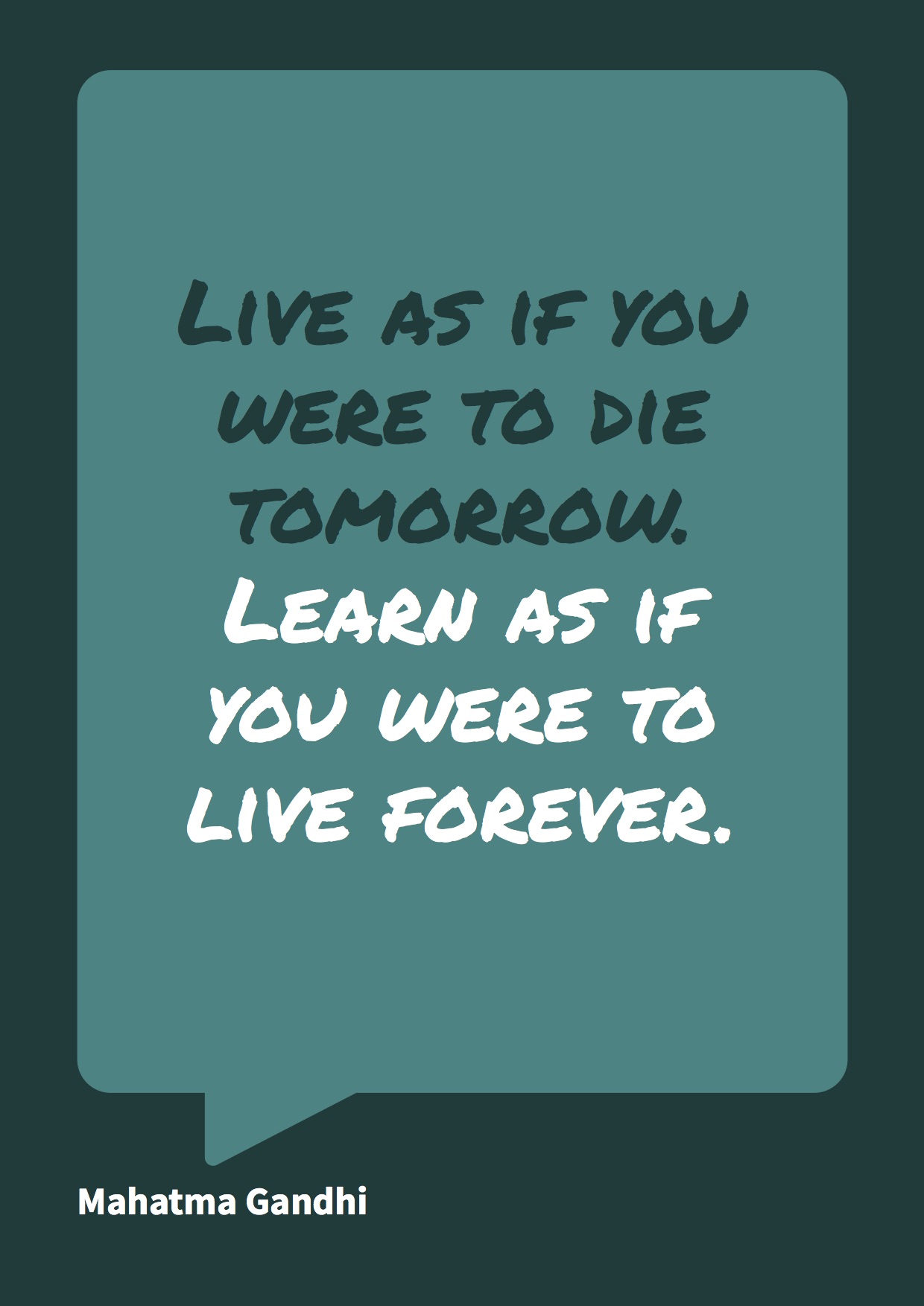
Layers of
Inequality
Affect
Education
Prof. Poonam Batra
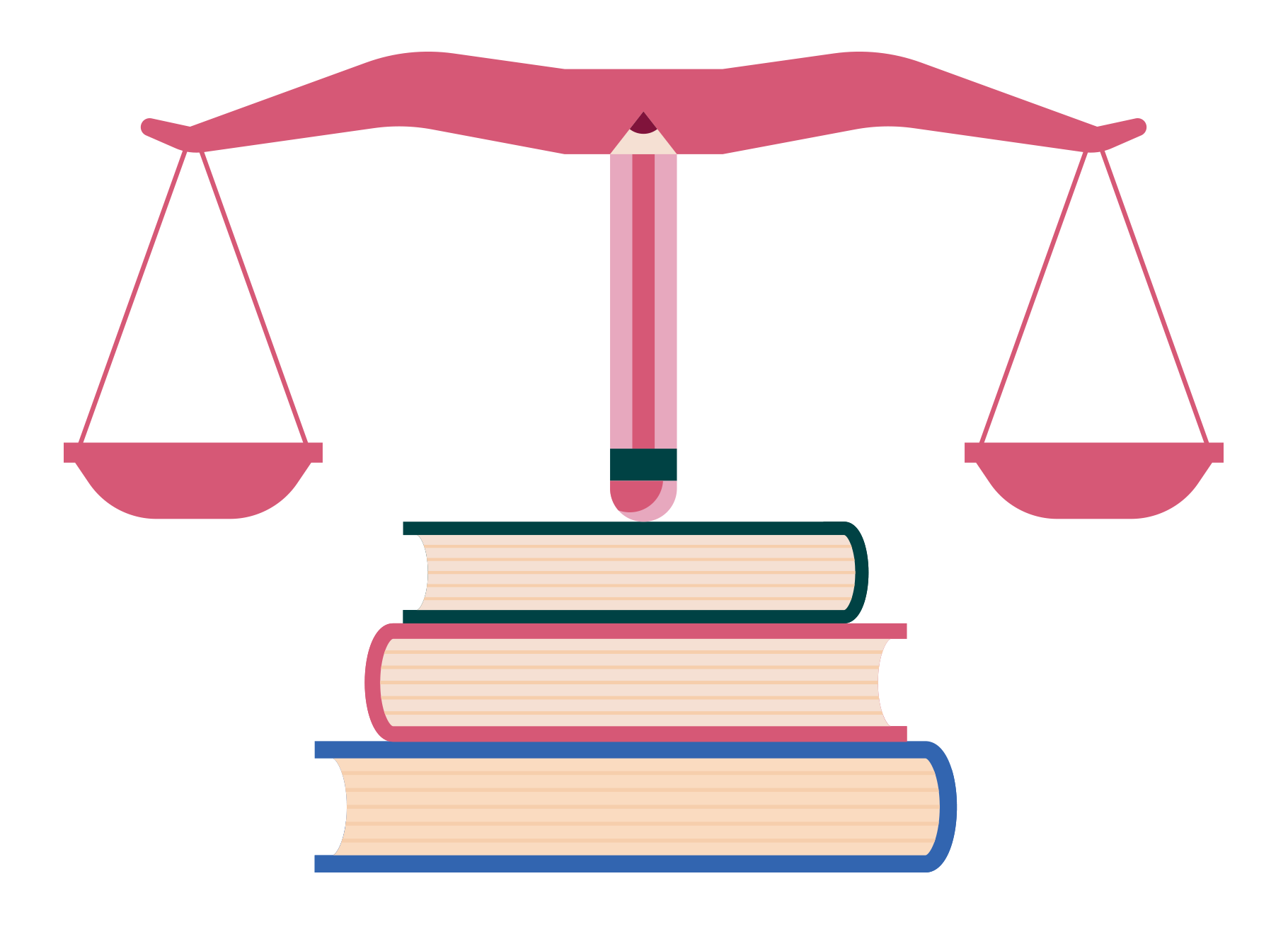
Educational inequality in India is evident in various forms, starting with unequal access to elementary education despite a Central legislation in the form of the Right to Education (RTE) Act. Region-specific data on literacy, enrolment, completion, and dropout rates, analysed across factors like gender, caste, and community, reveals sustained educational disparities. For example, although women’s literacy increased by 15 per cent during the liberalisation period from 1991 to 2001, the gender gap in literacy between boys and girls remained at 22 per cent and is still hovering around 17 per cent.
17%
The National Curriculum Framework of 2005 and the National Curriculum Framework for Teacher Education (2009) sought to align school curricela and pedagogic approaches with children’s social, cultural, economic, and political life. The Right to Education Act of 2009 made education a fundamental right for all children between the ages of 6-14 years. While these interventions were steps in the right direction, they could not fully address the deep-rooted issues that perpetuate educational inequality.
Research indicates that educational inequality does not directly stem from economic inequality but from lack of ‘cultural capital’ and ‘supportive mediating facilities that result in children remaining educationally deprived. The concept of cultural capital, introduced by French sociologists Pierre Bourdieu and Jean-Claude Passeron, consists of a variety of dispositions and capacities arising from social origin, education, taste, lifestyle, language, and dress that provide individuals with social mobility and the possibility of changing their hierarchical position in society.
Marginalisation plays a central role in educational inequality.
While caste and ethnic identities are prominent axes of marginalisation; poverty, gender discrimination, communal and language-based exclusion and disability add to the layers of educational inequality.
Unequal provision of school education has institutionalised disparate learning environments, with state governments establishing separate English medium and ‘ability’ sections within schools. These disparities have particularly affected marginalised groups such as Scheduled Castes (SCs), Scheduled Tribes (STs), Other Backward Classes (OBCs), minorities, and girls, impacting their educational access, participation, and learning. Despite state policies aiming for positive entitlement, SCs remain at the bottom of educational enrolment in higher education, suggesting a shift from older forms of inequality to new ones.
The unequal educational landscape is further mediated through global trends of commercialisation, privatisation, internationalisation, and technocratic regimes of accountability and surveillance through which teaching and learning are understood and managed. These include privatising schooling even for the poor, instituting high fees and installing CCTV cameras to make teachers accountable. This shift in policy takes the attention away from critical issues of equity, quality, and social justice in education. Curricular practices in Indian schools suggest a lack of significant progress towards greater equality or democracy. On the contrary, there has been an expansion in the gap between the rich and the poor, and the discourse of “us” versus “them” within schooling has become more entrenched. Yet, education policy initiatives continue to pay limited attention to the school and the classroom where capabilities are assumed to be developed and honed.
Primary research evidence and classroom observations indicate that children are excluded from learning not only due to the absence of necessary conditions for school participation and learning Rather, exclusion happens because of the presence of capability deprivation in many schools which children of the disadvantaged and poor attend with a degree of hope Capability deprivation, according to Amartya Sen (1999) refers to deprivation of opportunities, choices and entitlements, and therefore includes the idea of freedom. Such an environment results in a troubling picture of schools
and classrooms where learning opportunities are regularly missed.
A significant factor contributing to this exclusion is teachers’ reluctance to acknowledge children from diverse backgrounds as capable of engaging and learning. There seems to be a prevailing school culture where children from marginalised backgrounds are stigmatised and not recognised as capable learners.
Differences among children in terms of their learning pace or methods are often interpreted solely through the lens of individual ability. Children are labelled as “intelligent” or “dull” with the latter being further categorised as “slow learners.” This thinking has been institutionalised in schools through the establishment of different sections based on ‘individual abilities.
the classroom. Capability deprivation, therefore, emerges as a direct consequence of this exclusion, which plays out in classrooms.
Primary data collected from teachers and ethnographic accounts of select state classrooms strongly support the view that the education of marginalised groups should be considered within an expanded framework of capability approach, taking into account how disadvantage shapes their school experiences.
Scholars argue that the reconstruction of knowledge in curriculum and teaching tends to reinforce established patterns of socio-economic relationships. An analysis of textbook content and pedagogical communication reveals how children from marginalised backgrounds are often compelled to
These negative attitudes towards children from disadvantaged backgrounds, coupled with a lack of belief in their learning potential and a focus on their class and social identities, suggest that children are not viewed as capable learners. The relationship between children and teachers shapes classroom dynamics, either including or excluding children from learning processes. When teachers attribute poor performance to inherent traits in children and their social background, they essentially sanction class inequalities.
The majority of underperforming children may be those who attend school with aspirations but are consistently excluded from learning processes within
undermine their own culture, legitimising the dominance of formal knowledge imparted in schools.5
While there’s growing research on the language and education of ethnic minorities emphasising the importance of home languages in early learning, concerted efforts to promote the use of mother tongue for tribal children’s education are lacking both within and outside the education system.
As a result of educational inequality, most of India’s underprivileged children in both government and private schools do not receive quality education. Irrelevant curricula and inadequately trained teachers fail to acknowledge the lived reality and cultural
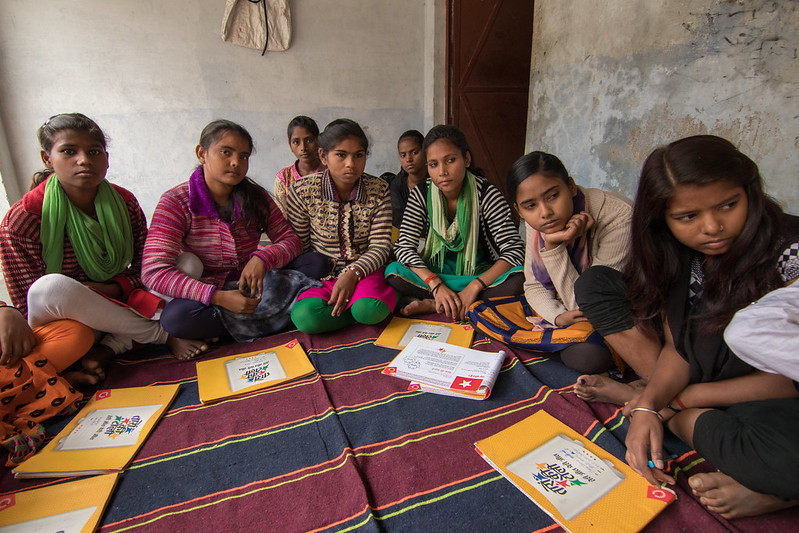
diversity of marginalised children, leading to high dropout rates among them from Grade V and above.
The education system in India reflects and perpetuates existing social and economic inequalities, often reinforced by neoliberal policies that prioritise utilitarian aims over equity and social justice. Hence, addressing educational inequality alone cannot overcome broader societal inequalities such as caste, ethnicity, and communal bias.
It is important to understand that in many contexts, ‘intrinsic’ social inequality is combined with a merit-based education system that tends to favour the selection of individuals deemed most suitable for various roles within the division of labour. The public examination system for instance, as the primary instrument of meritocracy, is assumed to be fair and therefore neutral. This is based on a deep assumption that meritocracy is neutral to economic, social, and gender injustices.
However, scholars argue that income, employment, and social inequalities persist due to an educational structure founded on the principles of meritocracy. This system, focused on merit-based selection, does not inherently address broader issues of social justice within education.6
Educational inequality appears to have become the primary mechanism through which various forms of inequalities are perpetuated and rationalised. India’s National Education Policy 20207 indicates this trend. While focusing on the need for gender resources and needs of socio-economically deprived groups, NEP 2020 does not focus on structural inadequacies such as unqualified and contractual teachers, large teacher vacancies, high teacher-pupil ratio, and inadequate infrastructure, that further add to inequalities within the system.
The proposal of the establishment of “special education zones” (SEZs) for “socio-economically deprived groups” (SEDGs), points towards a segregated national school and teacher education system that solidifies differential learning environments and educational content for different segments of the population. The NEP 2020 focuses on learning outcomes and testing regimes tied to addressing the learning crisis, enhancing employability and global competitiveness. However, specific measures are required to break the myth of equal access to participation and learning via the rhetoric of rights-based approaches in order to provide equitable quality education for all.
Addressing educational inequality in India requires sustained efforts and collaboration among policymakers, educators, communities, and civil society. By embracing culturally responsive pedagogical practices, promoting equitable access, and fostering representation, we can strive towards a more inclusive education system that empowers every child, regardless of their background, to reach their full potential. Achieving equity in education will not only shape a brighter future for India but also strengthen the foundation of a truly inclusive and just society.
- Pappu, R., & Vasanta, D. (2010). Educational quality and social inequality: Reflecting on the link. Contemporary Education Dialogue, 7(1), 94-117.
- Kumar, K. (2019). Education: Safer options. In India Briefing, 1988 (pp. 111-128). Routledge.
- Batra, Poonam (2017). Quality of education and the poor: Constraints on learning. In M. Peters, B. Cowie and I. Mentor (Eds), A companion to research in teacher education, 417-33. Singapore: Springer, 2017.
- Majumdar, M., & Mooij, J. (2012). Education and inequality in India: A classroom view. Routledge.
- Kawalkar, A, Srivastava, H., & Shevade, R. (2023). Voices from the margins: Exploring possibilities of connecting formal education to the funds of knowledge owned by Adivasi communities in the Kesla Block of Madhya Pradesh. TESF India, IIHS.
- Sandel, M. J. (2020). The tyranny of merit: What’s become of the common good?. Penguin UK.
- Gol (2020). National Education Policy. New Delhi: Government of India.
“Social Justice is the Only Equaliser”
Annie Namala
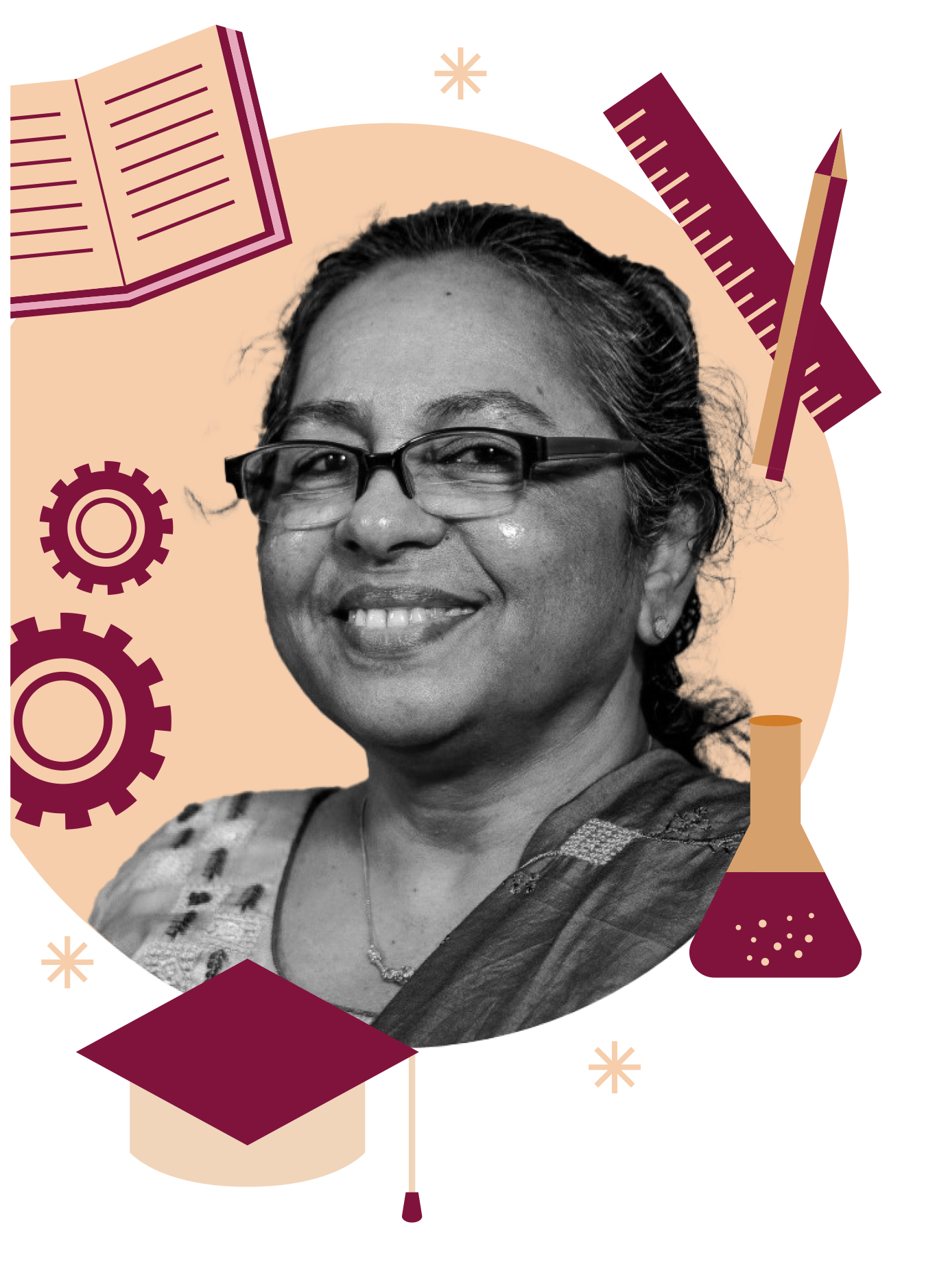
The Right to Education (RTE) Act is one of the single most important social welfare measures enacted by the Indian state in the last 15 years, laying the groundwork for compulsory and free education for children from 6-14 years of age. A multitude of voices and strong civil society action built pressure on the government to make the Act a reality. Annie Namala, the Executive Director of the Centre for Social Equity and Inclusion (CSEI) played an important role in the movement, consistently highlighting the needs and perspectives of marginalised communities towards education. She has worked to support community-led organisations and recognising community leadership. In recent years, Annie and CSEI have focused on developing supplementary learning modules in English, Mathematics, and Life Skills for students from Dalit, Muslim and tribal communities to bridge learning gaps. She explains how her own life’s experiences made her think more deeply about equity and inclusion.
The Master’s in social work gave me no orientation on the caste system or its realities on ground. However, when dealing with land encroachment, issues of violence, non-payment of wages – people were on two sides the perpetrators belonged to non-Dalit communities and the victims were always Dalit communities. Thus began my understanding of the impact of the caste system on communities.
As I started looking more deeply at the discrimination, exclusion and landlessness of Dalits, it became very clear that education is the one equaliser and the only way out, Dalits have nothing to fall back on- neither generational assets nor family connections.
In my initial years, I focused on education as generation of awareness, and access to systems and provisions. But in the last 10-12 years, I’ve become more concerned about the quality of education for children and concerns about schooling and the education system as a whole – especially what the state provides to the people.
It was the RTE Act which brought me much more into the realm of the education system as a whole.
The Right to Education (RTE) Act came out in 2009. By then I was in Delhi. The RTE Forum was formed of which I became an active part. The then Ministry of Human Resources Development (MHRD) had set up an advisory committee to look at the implementation of the RTE Act.
I began travelling across north India to see various education systems. I had studied in southern India where schools and colleges function regularly and was enrolled in Central School – one of the best educational institutes.
Therefore, the erratic functioning of schools and colleges in North India was a shocker.
It was shocking to see that children didn’t go to schools regularly in some parts of north India. Infrastructure challenges and teacher vacancy was huge, the lack of adequate teachers made classes unmanageable and any teaching impossible. I found that higher education students hardly attended classes. Even when the school had good buildings, adequate space and a playground, even a library or lab, there was little teaching-learning. The majority of parents, being non-literate and eking out their livelihoods, could hardly interact with the schools or hold them accountable, Innovative ideas like the school management committee were not able to fulfil their role and tasks.
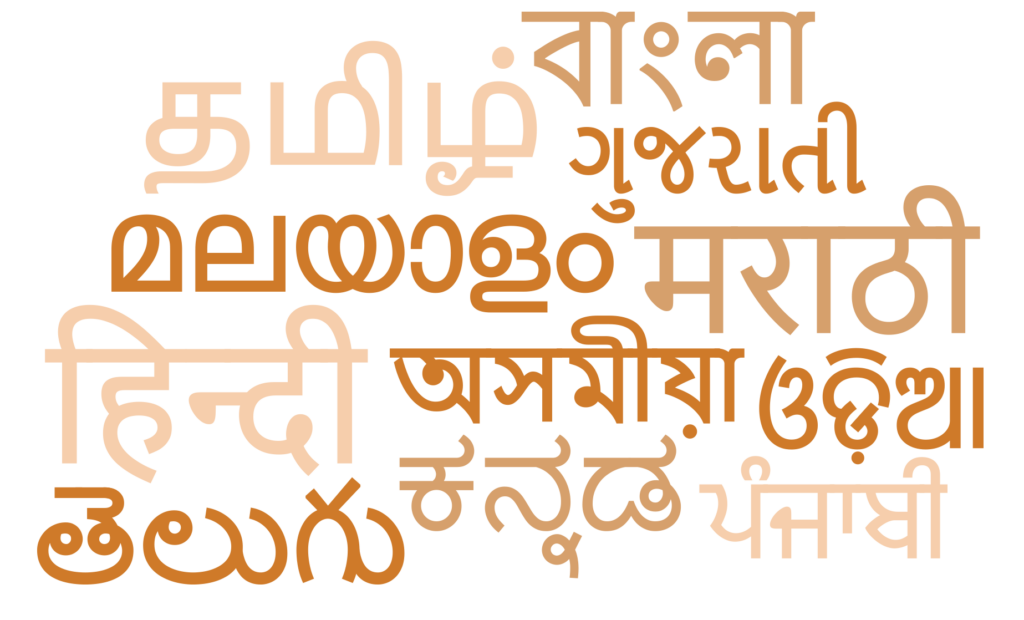
One of the best aspects of the RTE Forum is its multi-stakeholder and multi-platform nature. There were academics who were engaged in education very closely, a variety of civil society members as well as technical experts. Some experts brought in the dimension of disability and children.
Others like me, brought in the context of the Dalit, tribal and Muslim communities, because that’s where I was most engaged in. I, very consciously, tried to bring in those voices and organisations, and also insisted that they be a part of the discussions, on the panels and a part of the agenda. This helped the forum also to build perspectives on the diversity challenges.
The RTE Forum was a very enriching and hopeful space and the government was open to our suggestions. The forum could have moved forward with a little more openness and commitment from the government.
As a part of the MHRD advisory committee, I chaired the sub-committee on equity and inclusion. We came up with a document on understanding the challenges of equity-inclusion, recommending possible measures to address them and provided a framework to address social exclusion issues in school education.
An important area of CSEI’s work is on Section 12 (1) C of the RTE Act that provides 25 per cent of seats for children from disadvantaged and economically weaker sections in private schools. Implemented well, this has the potential to promote social inclusion in our very fragmented society – where children can build friendships across social barriers. Despite many challenges in the process, poor and disadvantaged communities also show great interest in availing these seats.
Through the RTE Act, education in government schools is free until Class VIII. Students also get mid-day meals. But once they reach Class IX, at least 50 per cent drop out. How do you address that?
Though the RTE Act is foundational and futuristic, we do not see the commitment of the government to make it a meaningful instrument for development and
inclusion. The spectrum of education is very broad in India including the spectrum within government schools. As I mentioned, I studied in a Central School which can compete with the country’s best private schools. But most government schools can hardly compare with the government run Central Schools. Similarly, some families can afford the most costly private schools while others cannot afford the costs in government schools nor guide their children in schooling or learning.
During the last three years we have been working on building modules in subjects like English, Maths, Science to support learning and life skills which help building confidence, communication and critical thinking. We worked with expert organisations to look at the syllabus and curriculum of Class X in Bihar, UP
The expectations and demand of the marginalised communities from the government is so minimalist – rations, water and electricity. They don’t even think that the state is responsible to them. If something comes along, fine. They don’t think they have rights in terms of protection or development.
We recently worked with nomadic communities in Rajasthan. They don’t even think that going to school is important because of their lifestyle which involves going from one place to the other. There is no settled life or confidence in society beyond their own community. We need specific and targeted attention on the inclusion, growth and development of each of these communities.
Also, I am not in favour of examinations but in the absence of examinations many teachers don’t feel accountable to examinations anymore. Teaching has become very poor. By the time a child enrols in Class IX, their understanding is so poor that they’re not able to cope. Most who continue higher education, enrol in Sociology, Political Science, History and Hindi. They don’t have a background in Maths or Science or English and they cannot read it on their own. So they do not have any competency in emerging markets. Even as many civil society organisations work in the education sector, we have little engagement in the teaching-learning arena which I see as a critical gap in our work.
and Delhi. We built modules which cover fundamental concepts and discourses till Class X. We have been able to train facilitators and elicit the interest of CSOs. We piloted the programme for about 12-15 months using student-friendly experiential methodologies. I find a huge impact.
When we did the baseline, students did not know the difference between a capital letter and a small letter in an English word. Their spellings were not clear. Beyond stating their names, they were unable to frame narrative sentences. Students feared Maths and did not have a logical understanding of the subject.
Through this 12-month period, I see their ability to understand sentences, to speak and communicate better. Children are found to enjoy Maths. And if I look at their worksheets, there’s a huge improvement. What also happens is once they start learning, their own interest is further sparked. They look up Youtube, Google Translate and spellings on Google. And today, as I look at this curriculum, I’m really looking at the potential that small organisations and community-based organisations can perhaps use this curriculum as a part of their work. There’s so much of a demand even in marginalised communities for quality education.
Our engagement has been more informal. But wherever we have gone, schools and teachers have shown a lot of openness. Especially in schools where there just aren’t enough teachers, additional support is always welcomed.
In my area of work, even in the RTE Forum, I would always look at organistions that are led by marginalised communities such as a Dalit-led organisation or a tribal-led organisation, or a woman-led organisation. Such leaders have inherent knowledge about the community and their personal connection with those issues can create solutions.
Transformation happens when somebody from within a community takes leadership. Within our country, there is a strong tradition of community leadership from within communities. CSEI has done important work in highlighting the need to support not just community-based organisations but where the agency and the leadership is also with the community.
During COVID-19, we tried to engage actively with adolescent tribal girls from Bihar, Dalit and Muslim girls from Uttar Pradesh as well as girls from urban slums in Delhi. The initial process was to organise them into peer groups and then expose them to general issues. We started talking to them about this in 2020-2021 and we did a baseline study to understand where the girls were with regard to English, maths, science, and so on. We have brought over 100 young girls into the process since 2020. The initial year was used to promote social and gender awareness and support for continued learning. From 2021, we began supporting learning in English, Maths and Science along with digital skills.
We collated a book based on the experiences of 49 young girls from the cohort. We realised that they face various challenges such as family expectations,
economic deprivation, or even accessing a bus. They don’t have liquid cash in hand. The challenges of transcending barriers for these young girls is immense but their individual and collective experiences are deeply inspiring since they constantly push boundaries in every sphere of life. Their experiences and aspirations in accessing education is witness to our education system and its failures, the incessant thirst and perseverance for learning and the potential in each one of our young people.
For us, inclusion does not mean just tracking discrimination and exclusion but exploring what equity-inclusion measures can be and seeing how young people work together with other community members.
For example, when we organised a meeting workshop on English and life skills with tribal girls from Purnia (Bihar) and Dalit, Muslim, tribal and other girls from Delhi, UP and Bihar – the tribal girls from Purnia did not speak Hindi at home. They largely kept to themselves and did not interact with the other girls since they were not confident about their skills and capability.
The workshop provided an opportunity to discuss different culture and language issues and showcase them. By the end of the workshop there was better engagement. Over the coming months, we found the tribal girls performing in an excellent manner. There was better acknowledgement of each others’ contexts and capabilities which spurred respect and collaboration.
Over the years, CSEI has expanded linkages with other marginalised communities – be it the nomadic community, persons with disability, single women, members of the LGBTQI community and so on. Promoting equity and inclusion are challenges, but given the right environment we can come together and build common spaces.
These are just some of the issues we grapple with and continuously look for ways to address.
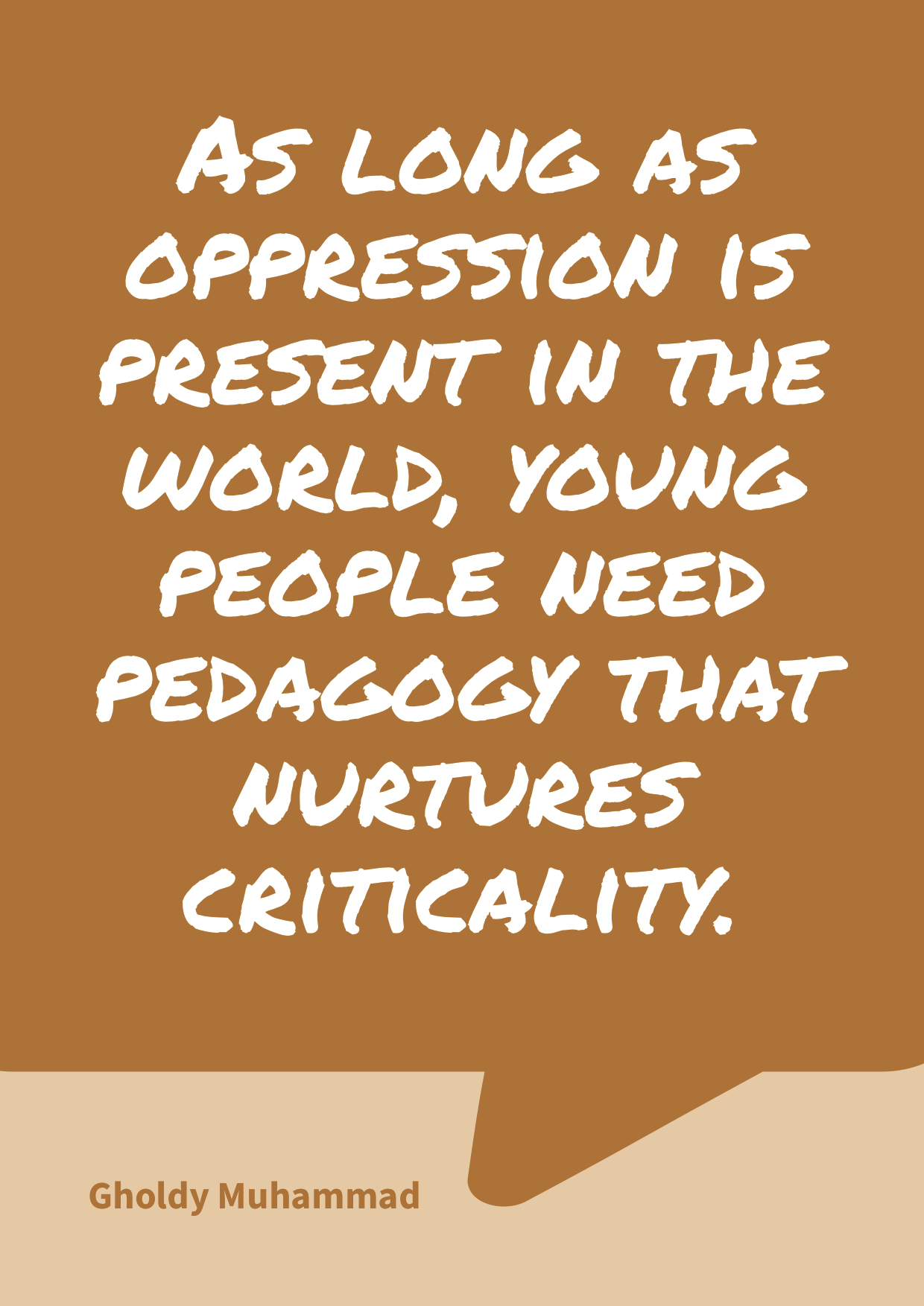

Meet The
Contributors

Sohini Bhattacharya
Sohini Bhattacharya is the CEO of Breakthrough who has worked in the development sector for more than 30 years. She also co-founded Sanhita Gender Resource Centre in 1996, and is a founding member of the Coalition for Good Schools Voices from the South – a collection of leading practitioners and influencers committed to delivering access to a safe learning environment for children across the Global South. In The Lede – her recurring editor’s note in Engendering Education – Sohini makes the case that the success of education as a social justice system is deeply embedded in achieving gender equity.
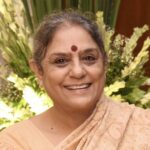
Prof. Poonam Batra
Poonam Batra is Professor of Education, formerly with the Central Institute of Education, University of Delhi, India. Her work spans multiple areas of knowledge: public policy in education; curriculum and pedagogy; teacher education and gender studies. Her recent research examines the politics of school and teacher education reform, comparative education imperatives, inequalities, education, and sustainability, and decolonisation of teacher professional development. Batra is also Co-Investigator of the Transforming Education for Sustainable Futures (TESF) Network Plus and India Lead.

Muskaan
Muskaan, an organisation based in Bhopal, has made its mission to provide education to the children of marginalised DNT and tribal communities in the region. The children who were otherwise cut-off from education have found inclusive learning at Jeevan Shiksha Pahal – an experimental school established by Muskaan. The school uses a creative curriculum and embraces the use of local languages such as Pardhi and Gond. Its students, many of them first generation learners, are making a mark in various fields like law. Jeevan Shiksha Pahal is a shining light in the lives of children who are cut-off from mainstream education and showing them the way forward.
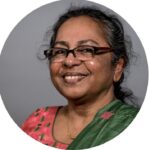
Annie Namala
Annie Namala is a social activist and researcher and currently the executive director of Centre for Social Equity and Inclusion (CSEI), a collaborative organisation promoting equitable opportunities for just inclusion. Her experience spans over three decades from community organising, social policy, research, networking and forum building across both South and North India. She firmly believes that quality, inclusive and non-discriminatory education is the key to support the young people in India to realise their own and the national potential. With firm belief in collaborative and collective work, her contribution to the Right to Education Forum, Wada Na Todo Abhiyan, Sustainable Development Goals, and the Leave No One Behind collective are critical.
COPYRIGHT
Engendering Education
Issue No.3
Editor-in-Chief:
Sohini Bhattacharya
Commissioning Editor:
Urvashi Sarkar
Editorial Team:
Arunava Banerjee
Barsha Chakraborty
Epti Pattnaik
Pritha Chatterjee
Richa Singh
Design & Illustrations:
Aditi Dash
Website Design:
Arjun Khare
Hemant Mudgil
Sonalika Goswami
Published by Breakthrough Trust, New Delhi, 2024.
Breakthrough Trust,
Plot-3, DDA Community Centre, Zamrudpur,
New Delhi, Delhi 110048
![]() contact@inbreakthrough.org
contact@inbreakthrough.org![]() inbreakthrough.org
inbreakthrough.org
Download this publication for free at: engenderingeducation.in
Write to us at:
editorialteam@inbreakthrough.org
This publication is licensed under the Creative Commons Attribution NonCommercial ShareAlike 4.0 Unported (CC BY-NC-SA 4.0). To view a copy of this license, visit: www.creativecommons.org/licences/by-nc-sa/4.0/.
All photographs used with permission from the contributors and their respective organisations.

